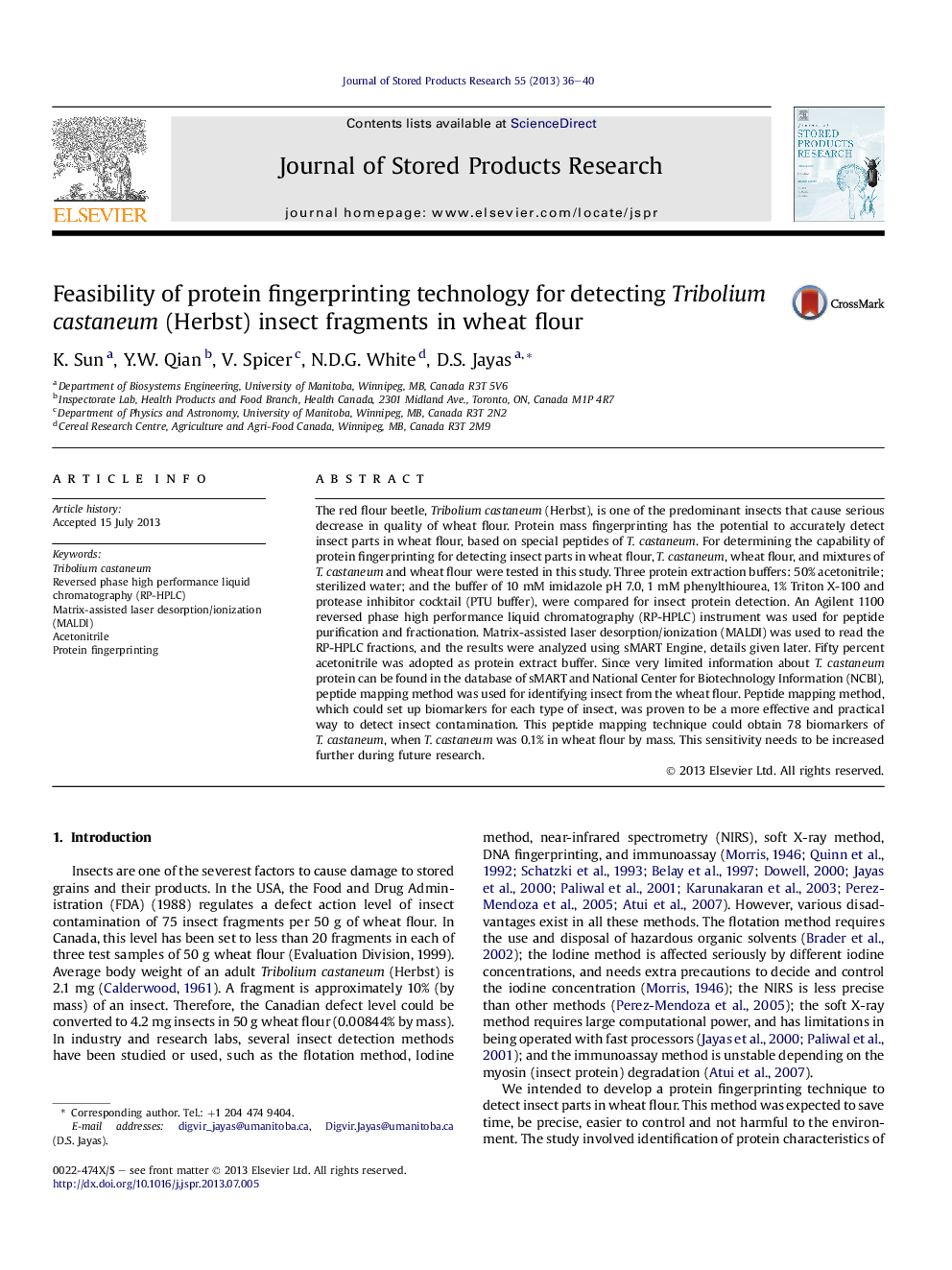| Article ID | Journal | Published Year | Pages | File Type |
|---|---|---|---|---|
| 4517137 | Journal of Stored Products Research | 2013 | 5 Pages |
•Protein fingerprinting technique was tested for Tribolium castaneum detection.•Fifty percent acetonitrile was more effective than another two buffers.•Seventy-eight high intensity peptides of T. castaneum could be identified.•There is large potential to detect lower levels of T. castaneum concentrations.
The red flour beetle, Tribolium castaneum (Herbst), is one of the predominant insects that cause serious decrease in quality of wheat flour. Protein mass fingerprinting has the potential to accurately detect insect parts in wheat flour, based on special peptides of T. castaneum. For determining the capability of protein fingerprinting for detecting insect parts in wheat flour, T. castaneum, wheat flour, and mixtures of T. castaneum and wheat flour were tested in this study. Three protein extraction buffers: 50% acetonitrile; sterilized water; and the buffer of 10 mM imidazole pH 7.0, 1 mM phenylthiourea, 1% Triton X-100 and protease inhibitor cocktail (PTU buffer), were compared for insect protein detection. An Agilent 1100 reversed phase high performance liquid chromatography (RP-HPLC) instrument was used for peptide purification and fractionation. Matrix-assisted laser desorption/ionization (MALDI) was used to read the RP-HPLC fractions, and the results were analyzed using sMART Engine, details given later. Fifty percent acetonitrile was adopted as protein extract buffer. Since very limited information about T. castaneum protein can be found in the database of sMART and National Center for Biotechnology Information (NCBI), peptide mapping method was used for identifying insect from the wheat flour. Peptide mapping method, which could set up biomarkers for each type of insect, was proven to be a more effective and practical way to detect insect contamination. This peptide mapping technique could obtain 78 biomarkers of T. castaneum, when T. castaneum was 0.1% in wheat flour by mass. This sensitivity needs to be increased further during future research.
